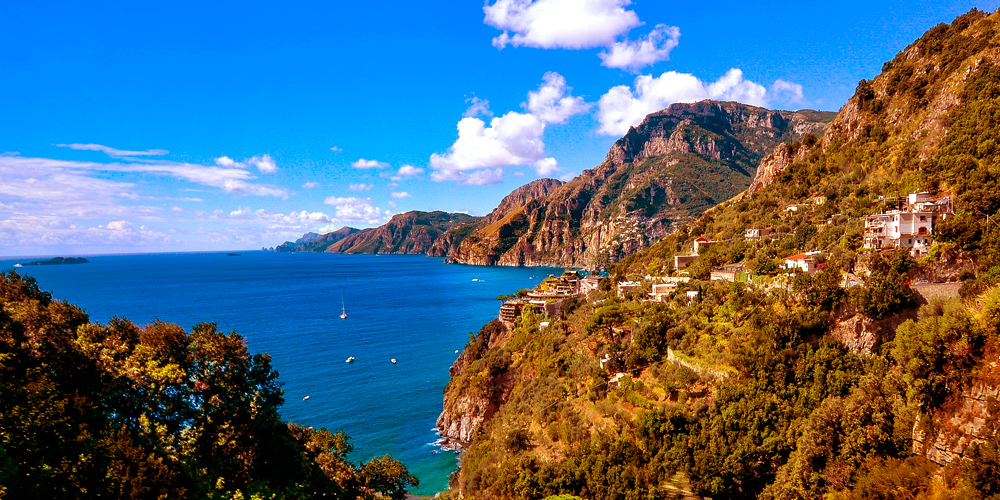All the towns of the Amalfi Coast

The Amalfi coast is one of the pearls of the Mediterranean Sea. Its landscapes between sea, sun, colours and breathtaking views are unmissable and inimitable all over the world. Its uniqueness is so appreciated that it is one of the most popular destinations for those who come to visit Naples and its surroundings.
On the coast, there are some of the most beautiful treasures of Campania that overlook the Tyrrhenian Sea and which arise on the slopes of the Lattari Mountains: Positano, Ravello, Maiori, Minori and of course Amalfi.
What do you see on the Amalfi Coast
From the Amalfi Coast to the Sorrento Coast: the Path of the Gods
The Amalfi Coast ideally begins with the path of the gods which from Agerola reaches Nocelle, a settlement of Positano and which allows you to take a nature path through caves, pine forests and extremely suggestive views of the sea. The nature path on the Lattari mountains is proper for walking and hiking enthusiasts, covering a strip of the coast of almost 7 km.
Positano, on the other hand, enjoys an international reputation. Populated almost every month of the year, it is during the spring that it shows its beauty. Getting lost in its streets that unravel between the houses clinging to the coast that seems built on top of each other give a suggestive verticality, which slopes down to the sea. Among the major cultural attractions is the Church of Santa Maria Assunta with the dome that stands out among the small colourful houses and the production of clothes and sandals that are sought after all over the world.
Conca dei Marini beach: a Unesco heritage bay
Things to see in Amalfi
Ravello: the auditorium, famous villas and breathtaking views
A few kilometres from Amalfi there is a real cave of colours and scents which, being more than 300 meters above sea level, offers a breathtaking view of the coast. Among the best attractions, there are those related to music and the colours of nature. In fact, among the things to see, Villa Rufolo and Villa Cimbrone stand out.
The first is a stately building transformed into a real stage for musical and social events which, together with the Ravello auditorium, by Oscar Niemeyer, a Brazilian architect with organic and sinuous shapes, embellishes the musical tradition of the Amalfi Coast. On the other hand, Villa Cimbrone is a noble palace famous for its wonderful garden which preserves some of the most particular species of the entire coast.
Beaches and culture in Vietri sul Mare
The last stop, in geographical terms, of the Amalfi Coast is Vietri Sul Mare. The city is famous for its centuries-old tradition of ceramics, famous throughout Italy, so much so that a real museum has been dedicated to this art, the Vietri Ceramics Museum. The potter tradition does not even leave the local architecture unscathed, so much so that it relives in one of the most iconic buildings of the city, namely the church of San Giovanni Battista, which has a completely tiled dome. The church has a mixture of styles ranging from Baroque to Romanesque, up to the local Renaissance style.
Furthermore, Vietri has a large expanse of beaches being the most popular destination for the inhabitants of the neighbouring territories.










Lascia un commento